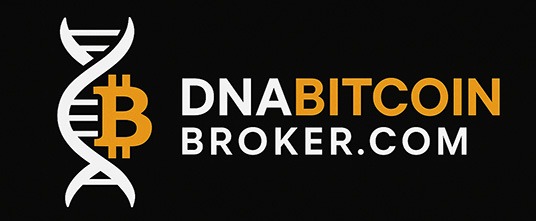Cryptocurrencies continue to flex their muscles in transforming the financial sector as they empower decentralised transactions and develop new economic systems. Thus far, regulatory frameworks have struggled to keep pace with crypto development, leading nations to adopt diverse payment regulations.
The crypto world enjoys enthusiastic acceptance from Japan, but China strictly limits its use. The European Union (EU) actively supports the Markets in Crypto-Assets (MiCA) regulation as it represents the first standardised framework for digital assets.
The EU’s Comprehensive Crypto Framework
The Market in Crypto-Assets (MiCA) represents the EU’s ground-breaking regulatory blueprint for establishing uniform standards of practice for Cryptocurrency. The European Union approved the Markets in Crypto-Assets (MiCA) regulation in 2022, which took effect in December 2024. Regulatory legislation works to maintain investor protection and market transparency while preserving market integrity.
Unlike past EU regulations that addressed individual crypto aspects, MiCA establishes a comprehensive framework governing digital asset providers and their services, including various subcategories of digital assets. This framework provides standardised legal requirements that enhance adoption across borders whilst reducing uncertainty around regulations.
Key Components of MiCA
- A dedicated regulatory framework targeting crypto-assets.
- Transparency requirements for issuers and service providers.
- Governance standards and conduct protocols are measures to protect investors.
- Restrictions on market manipulation and abusive practices.
- Capital, custody and reserve requirements for Stablecoins.
- The introduction of “pilot programs” to encourage innovation.
MiCA classifies crypto-assets into four categories:
- Utility Tokens – Provide access to a product or service.
- Asset-Referenced Tokens – Stablecoins backed by a basket of assets like fiat currency or commodities.
- E-Money Tokens – Stablecoins tied to a single fiat currency.
- Other Crypto-Assets – Assets that don’t fit into the above classifications.
These clear guidelines ensure each type of asset is regulated appropriately, balancing oversight with innovation.
Global Crypto Regulations
Global crypto regulations have remained fragmented for a long time. Different countries have adopted varying strategies, with some offering clarity while others remain uncertain or restrictive.
United States: A Patchwork of Regulations
The US still lacks a unified framework. This is especially true with multiple agencies overseeing Cryptocurrencies:
- – Commodity Futures Trading Commission (CFTC) regulates Bitcoin and Ethereum as commodities.
- – Securities and Exchange Commission (SEC) oversees tokens classified as securities.
- – Financial Crimes Enforcement Network (FinCEN) enforces anti-money laundering (AML) compliance.
Additionally, each state has its own set of regulations, further complicating the crypto space. Discussions on crypto legislation in the US are ongoing, even though a comprehensive federal regulatory framework has yet to be finalised.
United Kingdom: Gradual Expansion of Regulations
The UK regulatory framework, developed by the Crypto Assets Task Force, is akin to MiCA but covers fewer aspects. The regulatory definitions under the UK framework cover only basic utility tokens.
In contrast, e-money tokens are limited, and the regulatory scope for crypto-assets remains narrower than MiCA. The UK’s Financial Conduct Authority (FCA) continues to shape its digital asset regulations as new rules continue to take shape in 2025.
Switzerland: Focus on Tax and Asset Classification
For a while, Switzerland has been at the forefront in crypto adoption, offering tax clarity and treating digital assets as property. Yet, its regulations primarily focus on asset classification and taxation rather than holistic oversight like MiCA.
Asia: Diverse Approaches
It is typical to say that Asian countries have adopted varying regulatory stances:
- Singapore, Japan, and South Korea have embraced crypto and, of course, with structured regulations.
- China and India remain cautious, with China maintaining its ban on most crypto activities and India coming in hot with strict tax policies.
MiCA stands out because it offers a unified, standardised approach, which is lacking in most parts of the world.
MiCA’s Impact on Lithuania
Lithuania is known for its thriving fintech sector and with significant shifts with MiCA’s recent implementations, which have so far had the following effects:
- – More Stringent Compliance Requirements: Crypto firms must adhere to set governance standards.
- – Increased Regulatory Oversight: Lithuania’s central bank has introduced additional supervision under MiCA guidelines.
- – Cross-Border Expansion: Standardised EU regulations allow crypto companies based in Lithuania to scale their operations across Europe more easily.
- – Boosted Investment Potential: Compliance with MiCA attracts more investors and businesses to Lithuania’s crypto space.
- – Greater Mainstream Adoption: Stronger regulations mean more institutional and public acceptance of digital assets.
- – Shaping Future EU Regulations: Lithuania’s rising adoption of MiCA positions it as a major player in developing future crypto policies.
By aligning with MiCA, Lithuania solidifies its role as the hub for regulated digital assets in Europe.
MiCA’s Role in Shaping Global Crypto Regulations
As crypto adoption grows, regulatory clarity is crucial. MiCA’s framework could undoubtedly be used by other countries and international organisations such as the IMF and the World Bank.
Potential Global Influences of MiCA:
- Encouraging other nations to adopt similarly comprehensive regulations.
- Regulatory alignment to make international crypto transactions more seamless.
- Establishing the EU as a global leader in responsible crypto practices.
The Future of MiCA and Global Crypto Regulation
Over time, MiCA could help bridge the gap between regional regulations, hence a more unified approach to global crypto governance.
Mica creates a vital regulatory structure that brings cohesion to global crypto-legal frameworks through EU-wide guidelines. Implementing MiCA in Lithuania entails stringent requirements, coupled with new opportunities that will boost the country’s future fintech growth. The future will define the extent of MiCA’s influence on global crypto regulations in Europe and beyond.
Image Source: Adobe Stock
Disclaimer: This article is purely for informational purposes. It is not offered or intended to be used for legal, tax, investment or financial advice.












